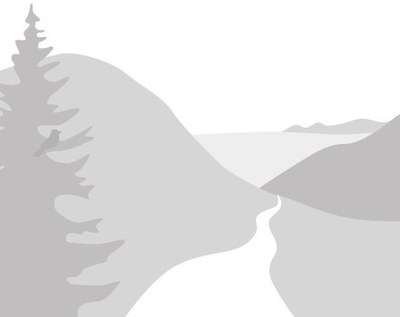
Trip Report
Silver Star Mountain/Silver Star Creek
- Tue, Jun 3, 2014
- Silver Star Mountain/Silver Star Creek
- Climbing
Silver Star Mountain
Trip Date: 5/31-6/1/2014
Approach: Silver Star Creek
Party size: two
Day 1: We started our ascent from the trailhead at 2pm under sunny skies, having climbed another peak in the area earlier in the day. The climbers’ path is well trodden from the road until about 5,000 feet, where it thins and becomes harder to follow through talus. There are frequent blow downs but overall the going is easy and the river is a nice handrail for navigation. At ~5,000 feet, the terrain flattens into a valley mixed with talus, swamp, and forest. At this elevation we found intermittent snow, which was no problem in the shade of the forest but made for some awkward post-holing over the talus fields. At the head of the valley (~5,100 feet), we ran into some skiers who were on the way out after having summited earlier in the day. They had had a great time. We ascended a snow slope to the left (east) from the head of the valley and then contoured to the south. The summer route likely goes more directly up the center of the valley to the 6,500ft high camp. By this time in the afternoon travel over the snow-covered talus without skis or snowshoes was exhausting and by 5pm we called it a day and pitched a tent at 6,100ft on snow.
Day 2: We left camp at 6am the following day; though the temperature had not reached freezing overnight the snow was firmer and post-holing less frequent. There was a nice boot path most of the way up the glacier (thanks to whoever put those in!). We did not need crampons despite the early start. There was a single small crevasse visible on the climber’s left (east) side of the glacier. We reached the col between the east and west summits at 8am. A wide tongue of snow led up the east summit block; the sun had not yet softened this snow and so we transitioned to crampons at the col. The snow ended about 30 feet below the summit at granite blocks. Getting to the summit required one low 5th class move (Beckey 4th class), for which we decided to harness/rope up using our glacier rope and a slung block for the belayer. The summit itself (8,876ft) is snow free and has a large block with slings and a rap ring. Once there we realized that there is an easier ascent route farther to the climber’s right (south) that we could have reached by traversing right on the snow partway up the summit block. After some summit chocolate and amazing views of Glacier, Baker, and the Liberty Bell group, we scrambled down the easier route to snow, and then down to the col, by 10am. Some uneventful plunge stepping led to the base of the glacier. Aside from more post-holing in the soft snow, the descent was uneventful and we were back at the trailhead at 1pm.
Equipment considerations:
Crampons, ice axe, and helmet.
We used harnesses and a short rope for the summit block but not for the glacier.
Footwear: The first ~1,700 feet are without snow and the trail has frequent blow downs. This is a long way to carry skis. The snow is sporadic until the head of the valley at ~5,100 feet, at which time travel later in the day is difficult with boots alone due to post-holing. Perhaps small snowshoes would have helped for a portion of the route between the valley and the glacier. The going will be easier in cooler temperatures, earlier in the day, and once more of the snow melts off of the talus.
For those interested in the Burgundy Col approach, we could see a boot pack in place leading down to the glacier.
 Andrew Graustein
Andrew Graustein
 admin
admin